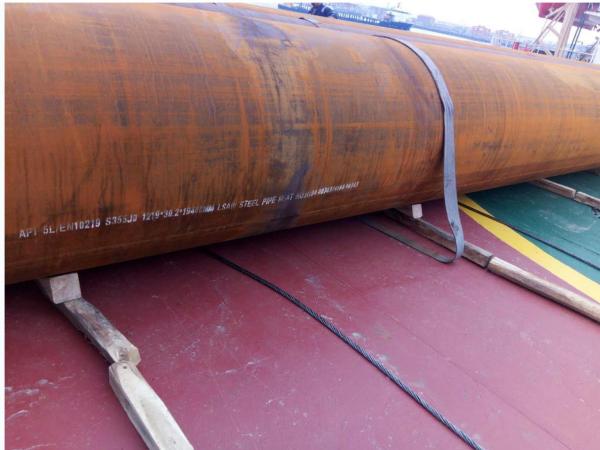What is ERW Steel Pipe?
"ERW steel pipe" is a high-frequency straight seam electric resistance welded pipe. The English abbreviation of Electric Resistance Welding is ERW. It is used to transport steam and liquid objects such as oil and natural gas, and can meet various high and low pressure requirements. It occupies a pivotal position.
A. Description of ERW Pipes
ERW pipes are produced using the electric resistance welding process. During this process, the edges of a steel plate or coil are heated and fused together to form a seamless joint.
B. Unique Features and Benefits of ERW Pipes
ERW pipes are known for their high precision and good surface quality. There are no welds along the pipe, which increases its strength and reliability. ERW pipes are typically used in low to medium pressure applications.
C.Common Applications of ERW Pipes
ERW pipes are versatile and suitable for a variety of applications, including pipelines, fencing, and infrastructure projects. They are cost-effective and easy to install, making them popular across industries.
LSAW Pipes
A. Definition and Explanation of LSAW Pipes
LSAW pipes are made using a longitudinal welding process. This technique requires the use of a large sheet that is cold-formed into the desired shape before welding.
B. Key Features of LSAW Pipes
LSAW steel pipes are known for their high strength and excellent performance in harsh conditions. Longitudinal welding ensures a strong bond, making these pipes suitable for applications where structural integrity is critical.
C. Industries where LSAW pipes are commonly used
LSAW pipes are strong and durable, making them the first choice for industries such as construction, shipbuilding and infrastructure development. Their durability and reliability make them widely used in demanding projects.
Differences between ERW pipes and LSAW pipes
Straight seam welded steel pipes can be divided into LSAW (straight seam submerged arc welding) steel pipes and ERW (straight seam high frequency resistance welding) steel pipes according to the welding process. Baowi-steel welded steel pipe manufacturer will introduce the differences between ERW and LSAW steel pipes from the following four aspects. Read on to learn more.
1. Raw materials and production capacity
The raw materials of ERW steel pipes are hot-rolled steel coils, while the raw materials of LSAW steel pipes are hot-rolled steel plates. Therefore, ERW steel pipes can achieve continuous operation on the assembly line, with high production efficiency and low production cost; while submerged arc welded steel pipes are made from steel plates, which cannot achieve continuous operation on the assembly line, with low production efficiency and high production cost. ERW steel pipes are limited by the thickness of the steel coils, and the maximum thickness that can be produced is generally 25mm, and the maximum diameter that can be produced is 660mm; while the maximum thickness that can be produced by LSAW steel pipes is 40mm, and the maximum diameter that can be produced is only limited by the width of the steel plate, with a maximum production diameter of 1422mm.
2. Welding
ERW steel pipe welding does not require welding wire; LSAW steel pipes require welding wire.
3. Appearance
The inner and outer welds of
ERW steel pipes need to be removed, which is beneficial for corrosion prevention; the inner and outer wall welds of LSAW steel pipes have extra height, which is not conducive to corrosion.
4. Procurement cost and difficulty
ERW steel pipe procurement cost is lower, while
LSAW steel pipe cost is higher, and the general price difference is 15%-25%.






 English
English Español
Español بالعربية
بالعربية











 Phone :
Phone :  Whatsapp :
Whatsapp :  Email :
Email : 


